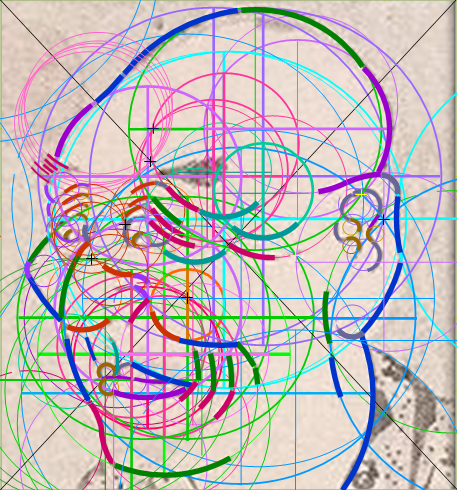Old man's face by Hokusai and face part of [Miyakoza] by Sharaku
This is the illustration from the previous blog [Who is Sharaku?].
Both faces are made of arcs of limited number of circles.
(I call this method scaling technique.)
After finishing a series of [Who is Sharaku?]
I started the analysis of Picasso work in 1932.[Picasso's geometrical spirit in 1932 invented syntactical deice]
I found out that his most refined level of technique is expressed as circle-cross model.
Arc is atom of art.
The arcs in artwork can be extended to circles.
The circles can be balanced as unit of the circle, the horizontal and vertical diameters.
The face of [Miyakoza] looks to be designed minutely, which reminds me of old men in [Hokusai Manga].
So I made the circle-cross model of both faces.
the detail of [Miyakoza] by Sharaku circle-cross model
old man from [Hokusai Manga] by Hokusai manga
There are some technical similarities.
A) use of scale:
[Miyakoza] 10 circles, [Manga] 9 circles
B) larger units make the basic structure.
C) the straight lines longer than the diameters show lining of units which have the effect of balance.
D) most of the rippling wrinkles are made of the same sized circles which are bundled at a point.
With these similarities it is hard to say that Sharaku is not Hokusai.








